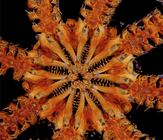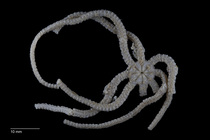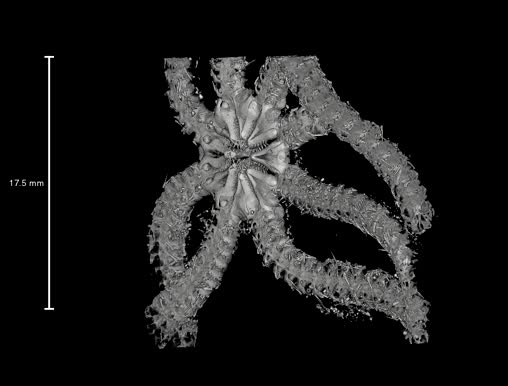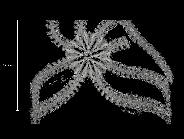WoRMS taxon details
Ophiojura exbodi O'Hara, Thuy & Hugall, 2021
1515847 (urn:lsid:marinespecies.org:taxname:1515847)
accepted
Species
marine, brackish, fresh, terrestrial
O'Hara, T. D.; Thuy, B.; Hugall, A. F. (2021). Relict from the Jurassic: new family of brittle-stars from a New Caledonian seamount. <em>Proceedings of the Royal Society B: Biological Sciences.</em> 288(1953): 20210684., available online at https://doi.org/10.1098/rspb.2021.0684 [details] 
Holotype MNHN IE.2007.6821, geounit Banc Durand
Holotype MNHN IE.2007.6821, geounit Banc Durand [details]
Etymology The genus and family are named after the Jura Mountains (noun), type locality for the Jurassic period, with the prefix...
Etymology The genus and family are named after the Jura Mountains (noun), type locality for the Jurassic period, with the prefix ‘Ophio’ derived from the Ancient Greek word for serpent. The species is named after the EXBODI expedition (noun) that collected the holotype, organized by Dr Sarah Samadi of MNHN, Paris. [details]
Stöhr, S.; O’Hara, T.; Thuy, B. (Eds) (2024). World Ophiuroidea Database. Ophiojura exbodi O'Hara, Thuy & Hugall, 2021. Accessed through: World Register of Marine Species at: https://www.marinespecies.org/aphia.php?p=taxdetails&id=1515847 on 2024-11-12
Date
action
by
![]() The webpage text is licensed under a Creative Commons Attribution 4.0 License
The webpage text is licensed under a Creative Commons Attribution 4.0 License
original description
O'Hara, T. D.; Thuy, B.; Hugall, A. F. (2021). Relict from the Jurassic: new family of brittle-stars from a New Caledonian seamount. <em>Proceedings of the Royal Society B: Biological Sciences.</em> 288(1953): 20210684., available online at https://doi.org/10.1098/rspb.2021.0684 [details] 
 Present
Present  Present in aphia/obis/gbif/idigbio
Present in aphia/obis/gbif/idigbio  Inaccurate
Inaccurate  Introduced: alien
Introduced: alien  Containing type locality
Containing type locality
Holotype MNHN IE.2007.6821, geounit Banc Durand [details]
From editor or global species database
Etymology The genus and family are named after the Jura Mountains (noun), type locality for the Jurassic period, with the prefix ‘Ophio’ derived from the Ancient Greek word for serpent. The species is named after the EXBODI expedition (noun) that collected the holotype, organized by Dr Sarah Samadi of MNHN, Paris. [details]





